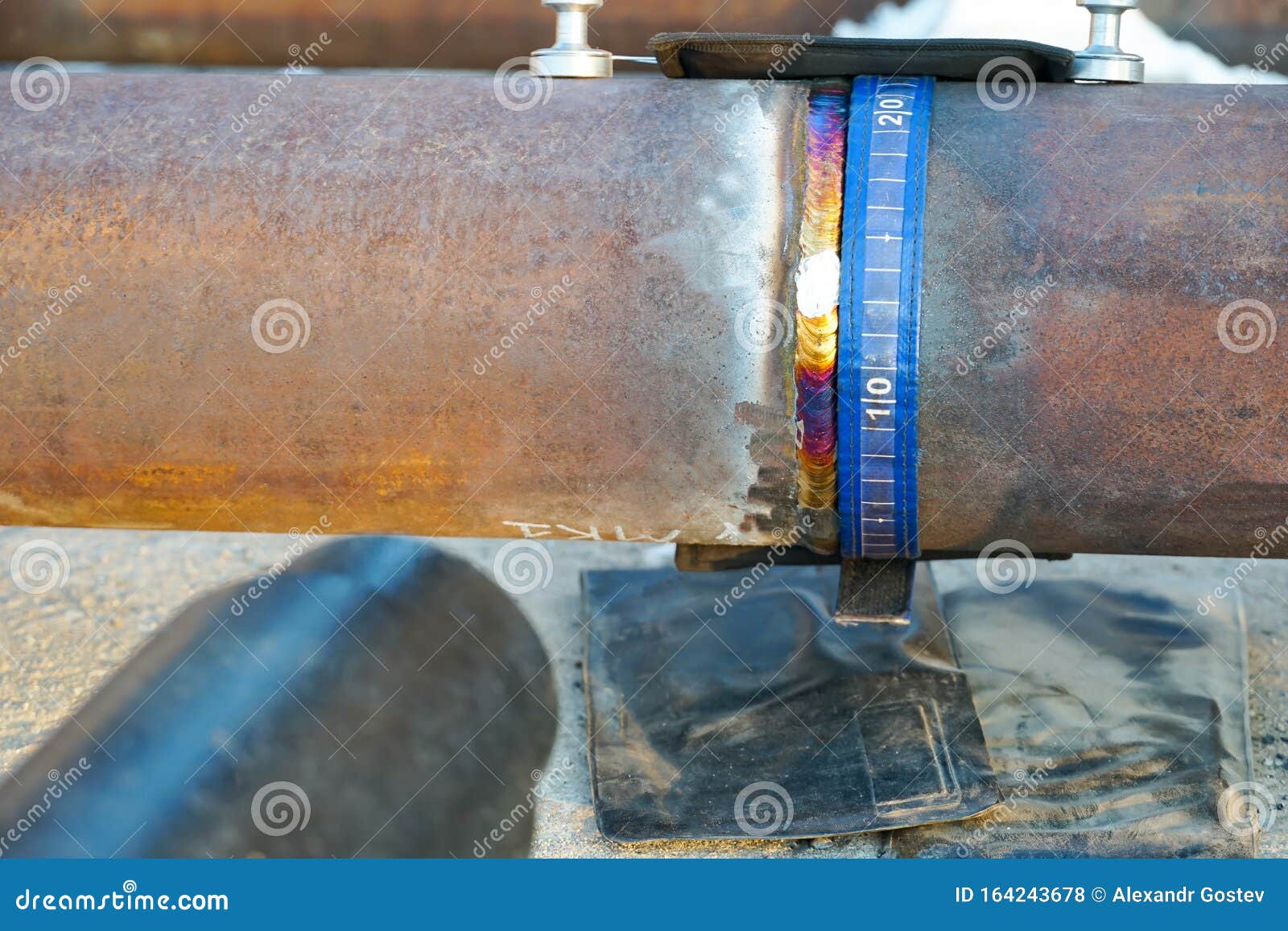Taking Full Advantage Of Performance: Pipe Welding Inspection Ideal Practices
By implementing best techniques for pipe welding examination, companies can simplify procedures, reduce mistakes, and enhance project timelines. The precise focus to detail required in welding examination holds the essential to the lasting toughness and dependability of the pipes, making it a subject of utmost value in the industry.

Significance of Reliable Welding Assessments
Reliable welding examinations play an important role in making certain the structural honesty and safety of pipelines. Correct examinations are important to determine any type of defects, interruptions, or blemishes in the bonded joints that could endanger the overall stability of the pipeline system. By performing thorough assessments, examiners can detect issues early on, stopping potential leakages, tears, or failings that could have major environmental and safety and security consequences.
Timely and accurate welding evaluations additionally aid in keeping compliance with sector standards and laws. Following these requirements is not only a legal need however also an essential step to guarantee the integrity and longevity of the pipes. Efficient assessments can contribute to set you back financial savings by decreasing the need for costly repair work or replacements due to welding defects that could have been protected against or remedied during the assessment procedure.
Making Use Of Modern Technology for Evaluations
To improve the efficiency and precision of pipe welding assessments, the integration of innovative innovations has actually ended up being progressively important in guaranteeing detailed and precise analyses of welded joints. One of the vital technical improvements in pipe welding evaluations is the usage of automated ultrasonic screening (AUT) systems. By welcoming these technical services, pipeline welding assessments can be conducted much more successfully, leading to higher top quality welds, improved general safety, and reduced project timelines.
Developing Clear Inspection Methods
Establishing clear evaluation methods is necessary for ensuring uniformity and dependability in the pipeline welding inspection procedure. These methods serve as a set of standards that lay out the specific steps, requirements, and techniques to be adhered to during assessments. By clearly specifying the evaluation methods, all inspectors associated with the process can understand their roles and obligations, bring about a more effective and standard evaluation process.

Normal testimonial and updates to the evaluation protocols are additionally essential to adapt to transforming industry requirements and requirements. By continually refining and enhancing the methods based on responses and lessons learned, pipe welding assessments can support the finest quality criteria and regulatory conformity.
Training and Accreditations for Assessors

Educating and qualifications for inspectors are paramount in making certain the skills and effectiveness of individuals tasked with managing pipeline welding procedures - Pipeline Welding Inspection. Appropriately trained inspectors possess the essential understanding and skills to successfully examine weld quality, adherence to welding procedures, and conformity with sector requirements and regulations
Qualifications, such as those used by the American Welding Culture (AWS) or the American Oil Institute (API), validate an assessor's knowledge and ability to do assessments to the highest criteria. These certifications usually need strenuous training, evaluations, and recurring professional advancement to ensure that examiners remain current with the most recent developments in welding modern technology and inspection methods.
Along with formal accreditations, continual training programs play a vital duty in enhancing examiners' capacities. These programs cover a wide variety of topics, including welding procedures, issue detection, security procedures, and pertinent codes and standards (Pipeline Welding Inspection). By buying detailed training and qualifications for assessors, companies can support the stability of their pipe welding tasks and minimize the risks connected with ineffective welds
Continuous Improvement in Assessment Procedures
Structure upon the structure of certified and trained inspectors, continuous improvement in evaluation processes is vital for making sure the continuous high quality and conformity of pipe welding operations. By carrying out a system of continual renovation, pipe welding examination procedures can progress to fulfill the changing demands of the market, technological developments, and governing needs. This entails on a regular basis assessing and reviewing examination procedures, techniques, and tools to determine locations for improvement.
One secret aspect of continual enhancement in evaluation procedures is comments. Gathering input from assessors, welders, engineers, and other discover this stakeholders enables a detailed assessment of existing methods and the identification of possible areas for renovation. Furthermore, leveraging analytics and information can offer beneficial insights right into the efficiency of inspection processes, enabling educated decision-making for optimization.
Additionally, spending in training and development programs for assessors can ensure that they are outfitted with the most recent understanding and skills to do their duties successfully. Continuous enhancement is a vibrant process that needs devotion and commitment from all stakeholders to drive excellence in pipe welding inspection methods.
Verdict
To conclude, maximizing performance in pipe see post welding evaluations is essential for ensuring the top quality and security of infrastructure tasks. By using technology, developing clear protocols, giving appropriate training and certifications for assessors, and constantly boosting assessment processes, companies can streamline their procedures and reduce threats. It is necessary for industries to focus on efficient welding examinations to maintain high criteria and meet regulative requirements.
Effective inspections can contribute to set you back savings by decreasing the i loved this need for expensive repairs or replacements due to welding defects that might have been prevented or fixed throughout the inspection procedure.
Developing clear inspection procedures is important for making sure uniformity and reliability in the pipe welding inspection process. By plainly specifying the inspection procedures, all examiners entailed in the process can comprehend their obligations and duties, leading to a more standardized and effective evaluation process.
Clear evaluation methods help in reducing the probability of errors or oversights during the evaluation procedure.Building upon the structure of experienced and certified examiners, constant enhancement in examination procedures is crucial for ensuring the ongoing quality and compliance of pipe welding procedures.